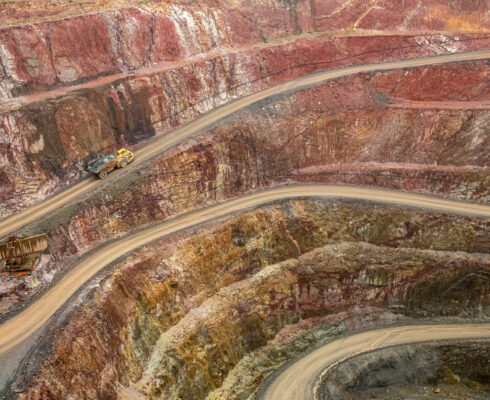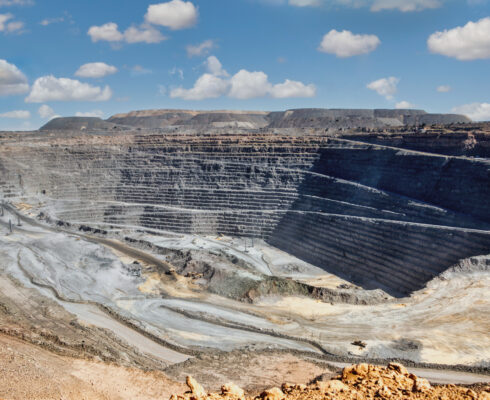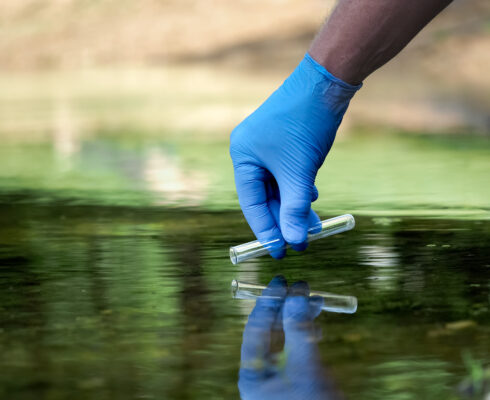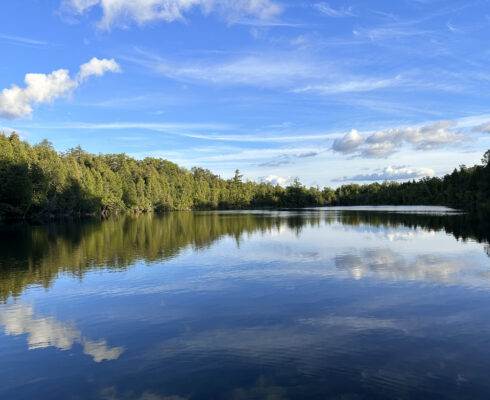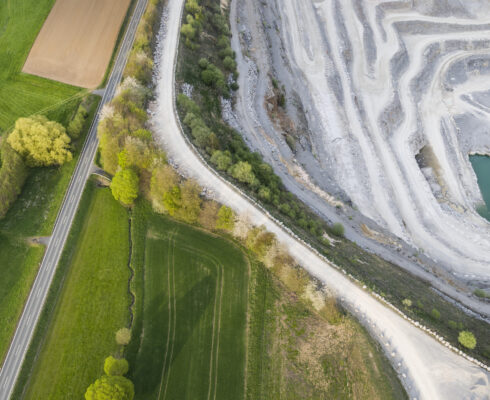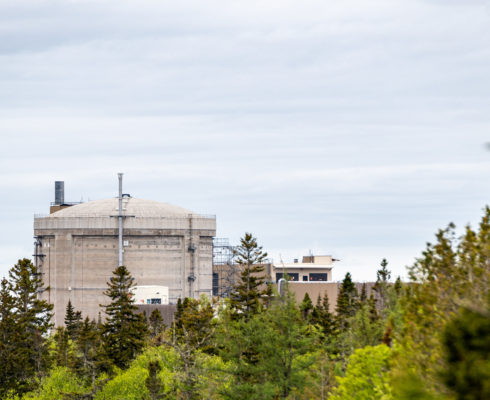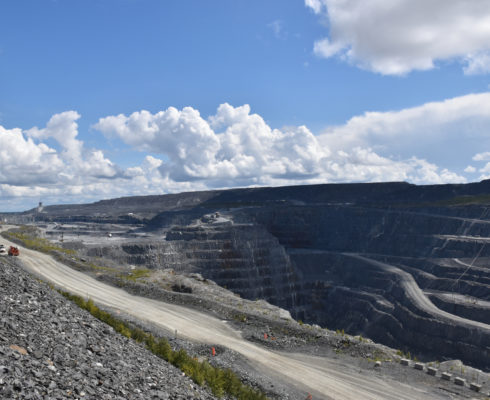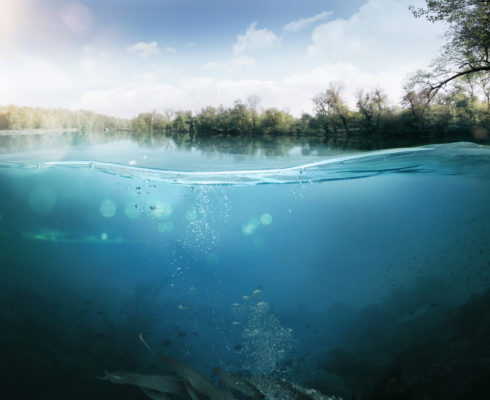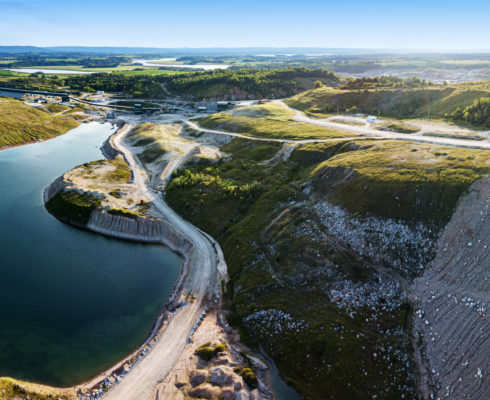Rain, snow, wind, and swells big enough to make even the hardiest sailor yearn for dry land, Joe Tetreault has experienced it all aboard EcoMetrix’s 24-foot research vessel.
Since our Captain is part of the scientific team, we benefit from having more environmental intelligence onboard.
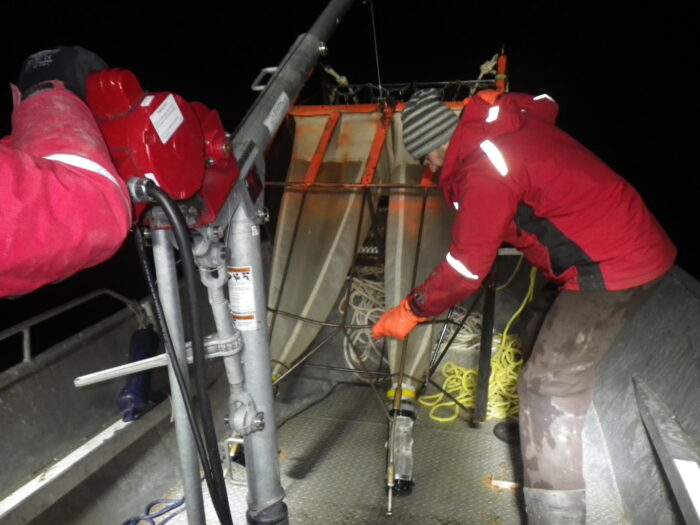
In his early days, the Director of Environmental Monitoring and Senior Aquatic Biologist spent seven months of the year on the water doing research for a variety of public and private sector clients
Tetreault, who had worked with the Government of Ontario, already had experience on a variety of boats before joining EcoMetrix in 2005. But not long after joining this environmental consulting firm, he began lobbying to acquire a large vessel suitable for open-water projects conducted on Canada’s Great Lakes.
In 2011 EcoMetrix purchased the 24-foot welded metal boat previously used on Lake Winnipeg, Manitoba. Big and sturdy, the Icelandic designed boat was ideal for working in colder temperatures and under often choppy conditions. Since its acquisition, the boat has been “tricked out” significantly to enable a broad range of research projects that are performed day or night, as long as the lake isn’t iced over. Along with those modifications, the boat was officially christened ERV1, which stands for EcoMetrix Research Vessel 1.
Some 15 years later, Tetreault spends less time at the helm, but now oversees a team of scientists, ecologists and aquatic biologists that have taken up the charge and expanded the array of projects that are conducted from the stable deck of the ERV1.
To learn more about these projects we caught up with Tetreault at EcoMetrix’s head office in Mississauga, ON.
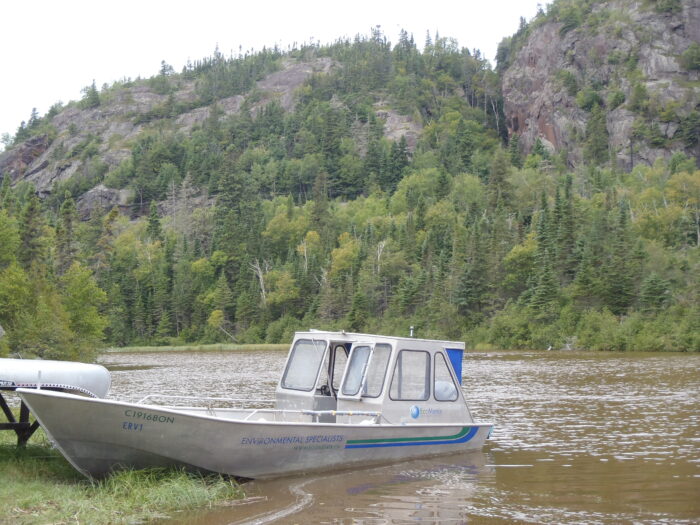
Q: You mentioned that the boat was “tricked out”, can you tell us more about how it was modified to meet EcoMetrix’s needs?
Joe Tetreault: The boat was pretty basic when we got it. Other than the closed cabin, it was really just a simple boat! We ordered motors, and then started to design it for our current and future needs. We had the platform welded to support a boom arm and installed a boom arm and winch so we could raise and lower heavy equipment up and down off the bottom of the lake. I personally put all the wiring in for the LED night lights and additional safety lights. With these new installs we can now safely do work at night, which increases the array of services we provide.
Q: Have you made other additions to the onboard equipment since then?
JT: Yes, we started doing some research in Lake Ontario to understand the implications of water intakes by large industries like nuclear power generation. That started in 2015 and was the genesis of a lot of the boat’s specialized equipment. One of the big innovations that we developed is our Benthic Sled. The function of the sled is to collect species at or near the lake bottom so we can get a much better understanding of the benthic environment than ever before.
The sled has primarily been used to understand the potential for entrainment of fish and other fauna by industry. Essentially, we towed the sled around near the intake as well as appropriate reference areas to determine if the draw of the intake actually influences the density of species near the intake compared to what we find at the reference areas.
Our work confirmed for the client that the advanced cap structures they had in place to protect entrainment were working. Their contingency measures allowed the water in and kept the organisms out.
Q: What other types of research have you conducted on the ERV1?
JT: Essentially we have towed the ERV1 from the north shore of Lake Superior in Ontario to the Bay of Fundy in Nova Scotia to do all sorts of research. We use it extensively in Lake Superior for environmental effects monitoring for pulp and paper companies along the north shore. In the Bay of Fundy, we used it to do a study of the effects of saline brine discharge on benthic organisms. And we have taken it out to conduct sediment quality studies in the Bay of Quinte and near Presqu’ile in Eastern Ontario.
Q: Is it typical for environmental consulting firms to own a research vessel?
JT: As far as I know, we are the only environmental consulting company in the Great Lakes area that has its own boat. There are engineering companies and dive companies that have boats, but they don’t have biologists. They are not prepped for the type of research that we conduct. None of the big players that would compete against us for work, have their own boat.

Length: 24 ft.
Engines: 150 four-stroke main engine, and a 15 four-stroke as a safety kicker motor
Maximum Speed: 72 km/Hr
Cabin: Has a full back cabin with soft-top back for ventilation
History: It was formerly a commercial whitefish fishing boat in Lake Winnipeg in Manitoba. Its design is based on Icelandic Fishing vessels
Capacity: Has carried up to 8 passengers, 5 people can work comfortably on the deck in transit
Q: What are the benefits of EcoMetrix owning its own boat?
JT: I could list quite a few, but the big one is that we have biologists who are certified to pilot the boat. So, we don’t have to engage a private captain to be able to do our work. That way the client benefits from a very experienced and knowledgeable team at all steps of the project. In short, we have more environmental intelligence onboard. The captain is a biologist, scientist or ecologist. So, there is more in-depth knowledge of what the purpose of the project is, rather than just having someone who’s only in charge of getting the boat from point A to point B.
Q: All those hours on the boat, there must be some funny stories?
JT: One comes to mind right away. We had a 6’7” new crew member join the team one day last summer wearing $90 waterproof pants. The first time he bent over the entire crotch ripped out and he spent the rest of the day patched up with $2 worth of duct tape. That was pretty funny!
“We always offer our time to take clients out on the boat because we think it’s important for them to see the work we are doing and what we go through each day – it helps them understand the reality of our work.”
All jokes aside, the important work Tetreault and his crew are doing helps public and private companies enhance their businesses while operating responsibly in the environments surrounding them.
The ERV1 crew may have shivered through some blustery days, but the overall sense of excitement about the important work they are conducting is palpable when Tetreault describes life on the water.







